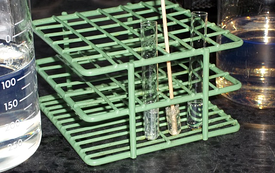The three most important variables to monitor in a DVP impregnation process to ensure that your system is operating to its fullest capacity are the vacuum, sealant and curing process.
Vacuum
The vacuum has a couple unique jobs during the dry vacuum and pressure (DVP) process.
- The vacuum’s first job is to remove the air from the porosity chain in the wall of the casting so sealant can ultimately take its place. This happens during the dry vacuum stage of the impregnation process.
- Secondly, the vacuum’s job is to be the transportation means for the sealant from the reservoir to the autoclave. After completion of the dry vacuum process, the deep vacuum that was created is used to move sealant from the reservoir to the impregnation chamber.
- The vacuum’s third and final job is to degas the sealant recently transferred from the storage vessel. The sealant is transferred back and forth between the storage reservoir and pressure vessel several times throughout the day. The turbulence caused by the transfer process infuses air into the sealant, which ultimately needs to be removed by the vacuum.
Sealant
 The second key process variable to monitor is the “health” of the sealant used. Manufacturers recommend that sealants be tested regularly for certain specifications.
The second key process variable to monitor is the “health” of the sealant used. Manufacturers recommend that sealants be tested regularly for certain specifications.
Two common tests are gel testing and viscosity.
- A gel test will provide information regarding the length of time it takes your sealant to crosslink and become a solid. Monitoring the length of cure will help ensure that your sealant is turning solid in the length of the cure process.
- The second test is viscosity. Viscosity is a measurement of the thickness of the sealant. Viscosity can be used as a measurement tool to ensure that your sealant has not been contaminated either with high moisture or foreign substances/materials.
Curing Process
The third most important variable to monitor when using DVP is the curing process.
- The curing process (water or oven) is important to ensure that the sealant cross links and becomes a solid in the specified length of time and temperature.
- In the curing process you may want to regularly check the length of time and temperature to ensure your process is meeting the specification of the sealant supplier.
- In addition, it is also important in a waterborne curing process to make sure your castings are covered by the water adequately throughout the cure cycle.
If you would like to schedule a vacuum impregnation system process survey, please contact Godfrey & Wing by clicking here or calling 1.800.241.2579.



